AI isn’t just for Acquisition: How Smart Ecommerce Brands Win after Checkout [Real-World Examples + AI Use Cases]
The more you fine-tune the post-purchase experience, the more reliable your revenue becomes. It's where customer lifetime value gets built and where revenue leaks get plugged.

In ecommerce, the sale doesn’t end when the checkout button is clicked. The real test starts after.
It’s a lot like a hotel stay. You might choose the hotel based on the price or pictures online. But you remember the stay based on what happened after check-in: clean sheets, no delays, and how staff handled the glitch no one saw coming.
That’s exactly how ecommerce works. A customer clicks “buy” and waits to see if the brand holds up its end. They watch how fast things ship, how easy returns feel, and how quickly support responds.
But this is where many brands lose ground. They chase acquisition, optimize ad performance, and squeeze creative output, while returns get messy, updates arrive late, and support tickets pile up.
The result? Customers leave. Quietly.
Post-purchase has become a missed opportunity with a real cost.
- 41% of ecommerce revenue in the US now comes from repeat purchases
- Also, 53% of shoppers say the post-purchase phase is the most emotional part of their journey
That’s owing to stress over delivery, confusion about returns, and frustration when refunds lag.
AI is starting to fix this by taking the guesswork out of what happens after checkout. It doesn’t just reply faster. It makes decisions. It detects intent, flags delays, and routes issues by type, without adding to the support queue. This is where ecommerce can be automated without losing trust.
Take an apparel customer who keeps swapping sizes. Instead of pushing them into another return loop, AI can flag the pattern, recommend the right fit, and give a fast exchange path.
No agent time lost.
No spreadsheet needed.
The more you fine-tune the post-purchase experience, the more reliable your revenue becomes. It’s where customer lifetime value gets built and where revenue leaks get plugged.
This isn’t just about giving updates. It’s about doing the work that keeps customers from calling in, canceling out, or never coming back.
This guide breaks down:
- Why post-purchase remains a blind spot
- Why everyone’s focused on the wrong AI use cases
- Where AI makes a measurable difference post-purchase
- How to do more without scaling headcount
- How Supermoon powers the post-purchase experience
The ins and outs of the post-purchase experience
Post-purchase used to mean “we shipped it.” Not anymore.
Today, what happens after checkout is what decides repeat business and long-term value. In this section, we will cover what post-purchase includes, how brands like Allbirds and Warby Parker have raised the bar, and where returns automation and AI tools now change the game.
What does post-purchase experience mean in 2025?
Post-purchases cover everything after payment. That includes order updates, shipping, delivery delays, support tickets, return requests, and follow-ups. Each step adds up, and it only takes one miss to cost you the next sale.
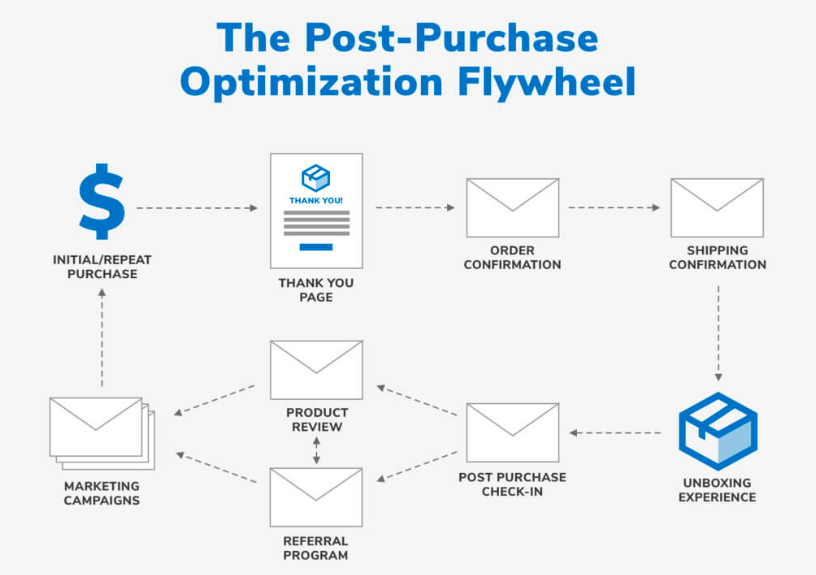
Nearly 80% of consumers say they won’t return after a bad post-purchase experience. The good news is that the post-purchase phase is fixable; it’s repeatable, measurable, and often already under your control.
How leading brands are getting the post-purchase experience right
Great post-purchase experiences aren’t flashy. They’re about predictability, clarity, and doing what was promised without delay.
Allbirds, the footwear and apparel brand, does this with a returns policy that doesn’t make shoppers jump through hoops. Shoppers can return worn products within 30 days. The process is quick, whether it’s in-store or through their website.
The brand uses tools like DoNotPay to cut time and steps out of the process. Their workflow is designed to show customers that their time is respected.
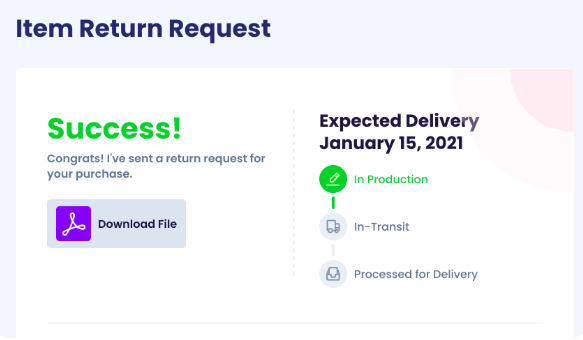
The eyewear company, Warby Parker, took a bold approach early. With their Home Try-On program, customers can try five styles at home before picking one. The process is easy to start, well-supported, and backed by fast returns. The payoff? A 50% lift in purchases and stronger buyer confidence.

Why AI is now essential [+ where it helps]
AI gets used in all the usual places: ad creative, bidding, and audience targeting. Brands keep fighting for attention at the top of the funnel while ignoring the gaps after checkout.
Having said that, the bigger opportunity lies in post-purchase.
- Refunds
- Returns
- “Where is my order?” (WISMO) tickets
Most teams are still buried in manual steps, sorting tickets, writing the same replies, and trying to calm angry buyers with limited data.
AI helps clean that up. Brands using AI post-purchase experience tools can now detect refund abuse, flag delivery issues, personalize outreach, and upsell products without burdening support teams.
Customers are starting to take notice, with a recent report finding that 73% of consumers say that AI made their post-purchase experience smoother. ReConvert users saw a 5.6% increase in average order value and $2.42 billion in upsell revenue, all from post-purchase workflows set up after checkout.
Where AI makes a measurable difference post-purchase
AI now touches almost every part of ecommerce. It brings logic, context, and pattern recognition to the problems that wear down support teams and chip away at profit.
With 93% of users saying the post-purchase experience shapes how they feel about a brand, let’s look at where AI moves the needle across the entire post-purchase window.
Smarter refunds, not just faster ones
Refund abuse cost ecommerce brands over $103 billion in 2024. While this is a rising concern, blocking returns too aggressively and slowing down the process risks alienating good customers.
AI helps find the balance. It scores refund requests based on a shopper’s behavior over time:
- How often have they claimed issues?
- If they have claims across SKUs
- And how their requests compare to peer behavior
Doing this will help teams avoid blanket rules that punish loyal buyers. Instead, they can fast-track refunds for trustworthy customers while flagging suspects for review.
Sentiment scoring that reveals CX issues in real time
AI tools can read tone, emotion, and language across support chat, reviews, and post-purchase surveys.
A shopper might say, “Thanks for your help.” AI tools can be used to detect sarcasm or passive frustration based on tone, response lag, and prior interactions.
This kind of scoring adds depth to static metrics like CSAT or NPS, which often miss hidden dissatisfaction.
How are retailers using the sentiment scoring model?
- They use it to alert CX leads when high-LTV shoppers are slipping
- Or to trigger outreach when sentiment tanks after a missed delivery or delay
Prioritized support that routes what matters
Not every ticket deserves the same response time.
By reading metadata like order value or product type, AI tags high-risk cases (e.g., VIP order not shipped) and routes them ahead of routine issues (e.g., size query).
| Type of Issue | Order Value | Customer Status | AI Routing Tier |
| Missing shipment | High | Repeat buyer | Tier 1 |
| Sizing question | Low | First-time buyer | Tier 3 |
| Broken item reported | High | VIP | Tier 1 |
| Return status follow-up | Medium | One-time buyer | Tier 2 |
Help customers help themselves instantly
Instead of sending a link to a help page, AI-powered tools read the order ID, check shipping updates, and send a specific, accurate answer.
This helps shorten handle time, reduce ticket reopen rates, and remove friction for customers who prefer to solve issues on their own.
That’s exactly what Methodical Coffee needed. As they expanded their business, their lean support team was stuck answering the same questions, often copied from an FAQ doc. With Supermoon’s Smart Contact Form, they now auto-resolve 25% of incoming queries. They have also seen a 70% drop in average issues submitted.
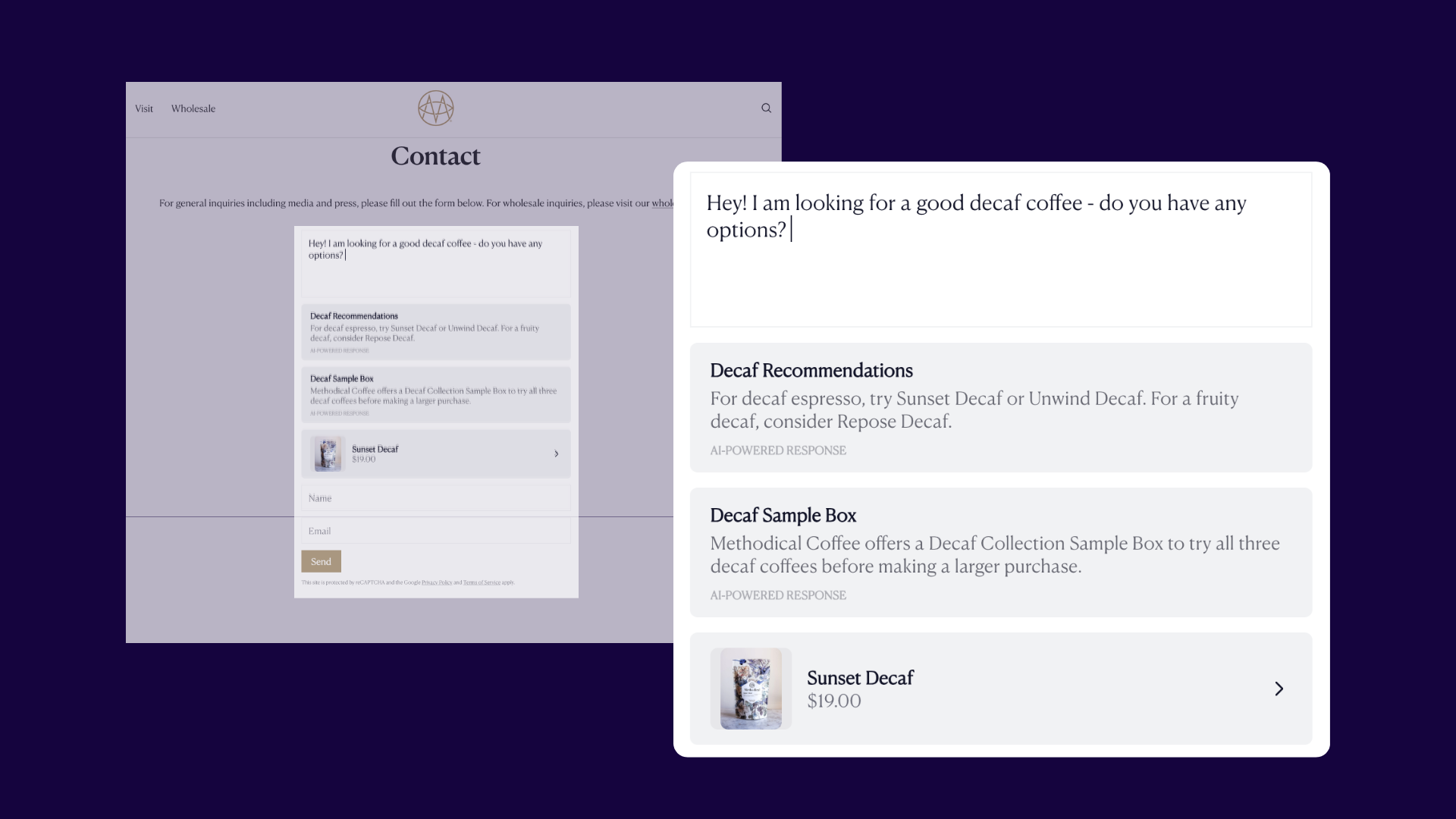
Handling delivery delays and lost packages
As per this report, 72% of online shoppers say on-time delivery is their top reason to buy again. But no brand can control every carrier.
What AI can do is monitor carrier feeds and warehouse integrations in real time. If a shipment stalls, it can trigger alerts before the buyer reaches out, often on the same day the delay occurs.
More than just sending status updates, the system can send helpful options like: reship, refund, or store credit. This level of control turns delivery failure into a retention moment instead of a churn risk.
Offering proactive support before problems surface
AI can predict who might need help before they even ask. That includes buyers who purchase something complex, seasonal, or new to their order history.
Say a customer buys an air fryer, or they have previously opened how-to queries; AI can trigger an email with usage tips.
Here are a few more examples of how AI can help with proactive support:
| Behavior | Trigger | Action |
| Bought for gifting | Holiday timeframe | Send a reminder + support link |
| First-time buyer | High-return category | Trigger tutorial or tips |
| Delivery to a remote area | Carrier delay risk | Share the tracking link early |
Automating order amendments in real time
The majority of changes (wrong color, address update, cancellation) happen within the first hour of checkout.
AI connected to the Order Management System (OMS), fulfillment tools, and Shopify APIs can catch these changes before pick-and-pack begins.
If a buyer updates the address, it rewrites the fulfillment record.
If they cancel, it removes the order from the batch queue.
Handling repetitive WISMO queries with context
WISMO accounts for the most common support ticket in ecommerce.
AI just doesn’t pull a tracking number. It checks actual status updates, looks at carrier handoffs, and distinguishes between late updates and lost packages. It also knows when a response needs empathy or a manual fix.
Automatically generating return labels
AI can process a return based on SKU type, order size, timing, and buyer history. It decides if the return is within policy and sends the label instantly.
Retailers can also prioritize high-value customers by offering faster or extended return windows automatically.
Freeing up agents to solve real problems
In advanced tools, the AI is trained to know when not to respond with a generic link and when to flag queries needing human intervention.
When AI handles low-complexity tickets and flags only what needs a real human, agents spend more time where it counts.
It also gives managers better bandwidth visibility, so staffing can match the actual issue load, not just raw ticket volume.
Scaling support without scaling headcount
Support volume tends to grow with revenue. But your team doesn’t have to.
Brands today are rethinking how they grow. Instead of increasing their headcount, they are training AI-powered systems.
The new model that’s working for most ecommerce brands is: to let AI handle the volume while human teams focus on moments that matter.
Let’s look at how AI tools are helping ecommerce brands scale smarter:
AI does the heavy lifting
Support tickets surge following seasonal demand, launches, or carrier issues.
In such cases, AI handles the first wave of customer questions. These are the high-volume, low-context queries that eat up time but don’t need human effort.
When these tickets are absorbed by AI, human agents are no longer buried in repeat queries. They can focus on issues that build trust: damaged goods, missed SLAs, or complex cases that need human judgment.
See what’s breaking before the tickets pile up
When support is buried in reactive tickets, bigger problems slip through the cracks. AI changes that.
AI turns every chat, email, and form submission into structured tags and labeled topics. This makes it easier to surface repeat issues and fix what’s breaking upstream, whether that’s a broken PDP link, delayed SKUs, or unclear cancellation policies.
Support leaders can use this to review policies, fine-tune flows, or escalate gaps in warehouse or product logic. Instead of waiting for issues to pile up, teams act early, keeping post-purchase LTV intact. With AI surfacing gaps in communication, operations, and products, AI-powered tools become instruments for better decision-making.
Where Supermoon fits in the modern post-purchase stack
Supermoon plugs into your inbox and knowledge base to handle repeat tickets, route edge cases, and summarize everything in plain language, so your support team moves faster and stays lean.
Automated replies that save time
Support teams field the same questions every day. Supermoon handles those on its own. It scans incoming tickets, pulls the right answer, and writes multiple reply options so agents can respond in seconds.
If something can’t be auto-resolved, it summarizes the message and flags it for review. Supermoon also works in any language and updates as your policies evolve, making it a perfect fit for fast-growing teams.
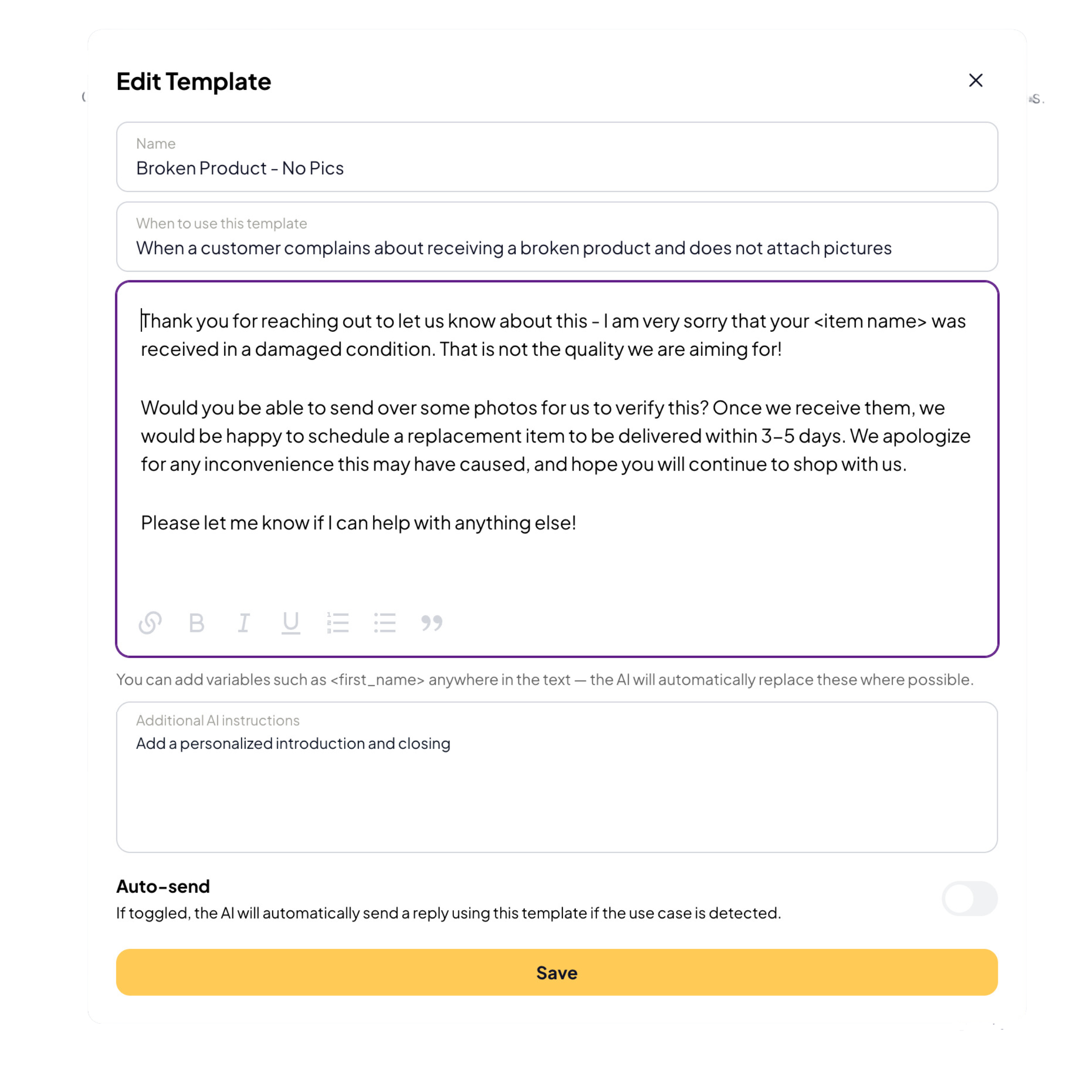
Sentiment-aware inbox and prioritization
Not every ticket is an urgent one, and your inbox shouldn’t treat them that way. Supermoon auto-tags messages from frustrated customers, delayed orders, or large-ticket buyers. Each ticket includes a sentiment emoji and summary, so agents have context before opening it. For escalated cases, Supermoon drafts tone-aware replies that sound calm and human, not cold and scripted.
These replies can be rewritten or expanded with a click, saving time without losing empathy. All of this adds up to faster replies, smarter routing, and better retention, especially when the stakes are high.
Proactive self-serve contact form
Supermoon’s Smart Contact Form is a resolution engine. It pulls answers from your website and policy docs, resolving customer questions before they reach your team. The forms even track abandoned questions, giving you visibility into what customers want but don’t submit.
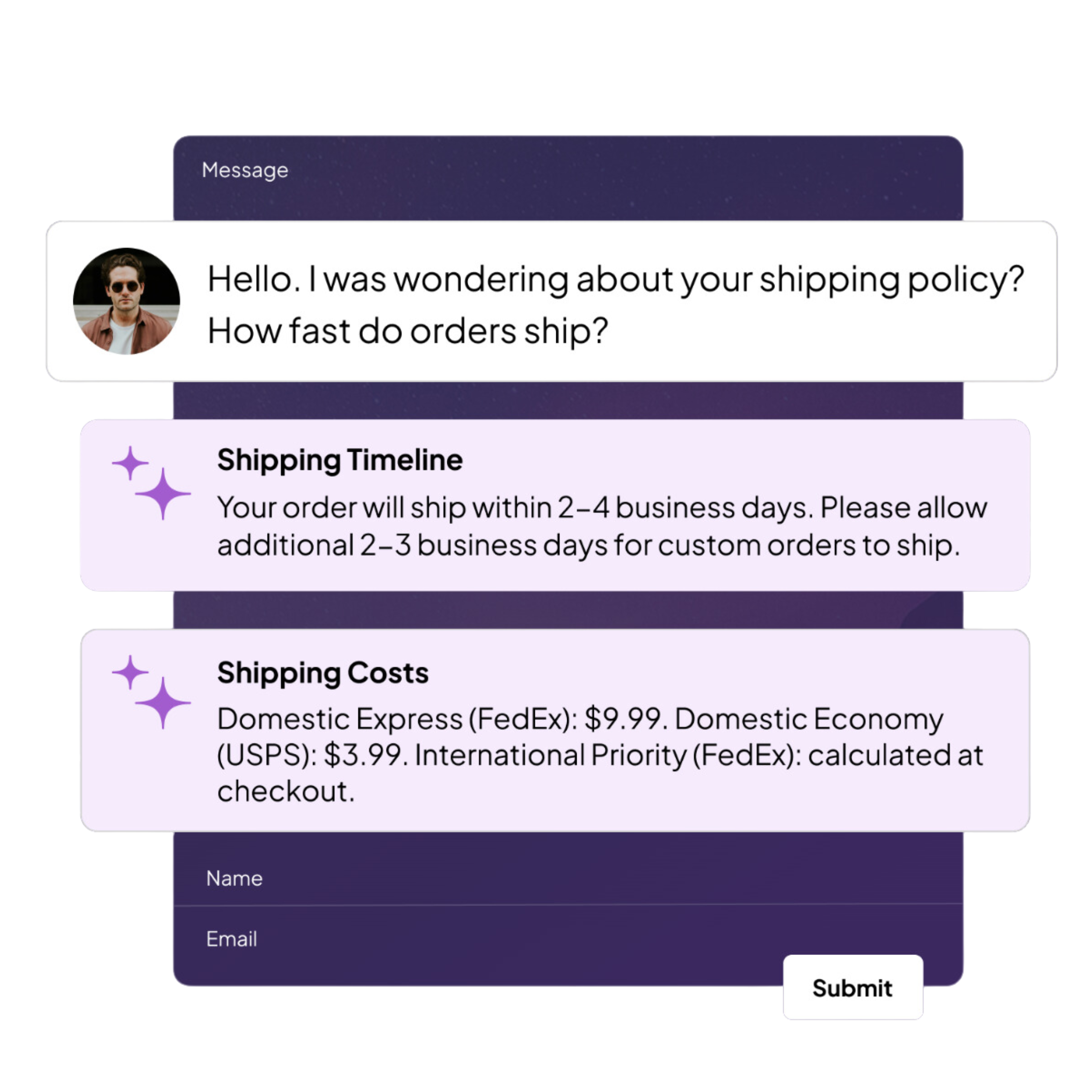
Supermoon’s AI is built for retention
AI isn’t just for acquisition anymore. Most ecommerce brands spend heavily to win customers and lose them after the purchase is made.
Post-purchase is where profits slip through. Supermoon plugs those gaps by tagging risky tickets, responding instantly, and handling repeat questions without human help.
Tools like Supermoon reduce cost, improve loyalty, and scale with you. It’s not built for vanity metrics. It’s built for what matters—retention.
Try Supermoon today and see what smarter post-purchase support looks like.
Ready to get started?
Don't miss out on the opportunity to leverage the power of AI. Take the leap into the future now!
Try for free


